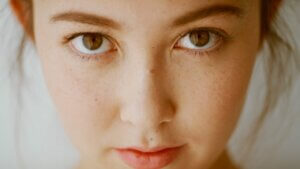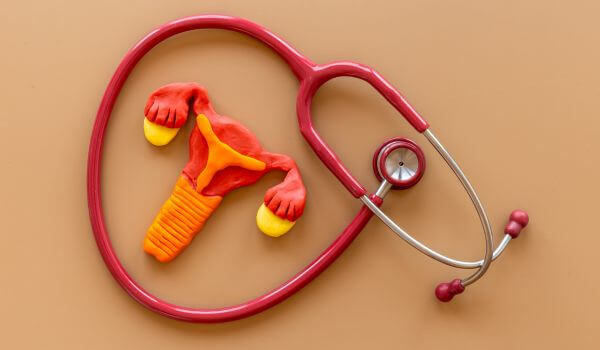
There is a causal relationship between common pimples that come and go for teenagers, and nodulocystic acne, which can be a life-long condition. Both cases start when an infection sets in on a hair follicle. Hair follicles are connected to sebaceous glands that produce the oil known as sebum. To cause acne, the sebum that lines the cells of the follicle root becomes abnormally sticky, and the opening gets clogged, most often by dead skin cells. This can create the first stage of acne.
The overall effect is that increasing areas of skin are infected, red, and swollen. Most often, acne will break out in areas of the skin with abundant sebaceous glands, like the hairline, scalp, face, chest, and upper back.
Doctors grade acne into four stages:
- Comedones
- Papules and Pustules
- Nodules
- Cysts
Often, doctors group together stages three and four under the term nodulocystic acne.
The differences between these four stages are:
- Comedones are better known as blackheads (technically known as open comedones) or whiteheads (closed comedones). Contrary to common opinion, blackheads are not caused by or a sign of dirty skin. When the sebaceous oil trapped in an open comedone gets oxidized, it turns black. The only difference in whiteheads is that oxygen can’t reach the oil.
- Bacteria (proportion-bacterium acnes) live on the skin and secrete molecules that convert sebum into free fatty acids. These cause inflammation that results in papule formation. Papules have raised heads pushed up by accumulated pus around the follicle’s base.
- Pustules can develop when the pus around the base of a papule is pushed up toward the surface, creating a lump (nodule) or white bump (pustule) in the superficial dermis. What most people call pimples are really pustules.
- Nodules cause hard lumps or knots (nodules) to develop deep under the skin. The nodules below the surface start to swell and appear as red bumps on the skin. They typically do not have the same appearance as a whitehead or blackhead. They can persist for extended periods below the skin’s surface. Usually, they can’t be “popped” like pimples, which means the pus is trapped, leading to discomfort and swelling. The nodules can persist for weeks or even months
- Cysts, or cystic lesions, occur when the follicle’s root expands downwards into deeper skin levels. The accumulated sebum and dead epithelial cells may rupture through the wall of the follicle and be released into the surrounding layers. Cystic acne creates a large bump that’s full of pus. It may hurt or itch. A cyst bursting may spread the infection and cause more breakouts.
What Is Nodular Acne?
Nodular acne appears as large, deep, and inflamed spots below the skin’s surface when trapped pus hardens. Nodular acne most often develops on the lower face and neck, upper back and shoulders, or chest.
Although more common in teenage boys and younger men, it also can develop in girls and women, owing to the actions of hormones in the menstrual cycle. A nodule feels like a hard knot just below the skin’s surface and is sensitive to touch.
Nodular and cystic acne have many features in common, and the terms are sometimes used interchangeably. Both are severe types of acne forming under the top layer of the skin. Cysts are usually softer than nodules and more likely to have visible pus inside.
Reproductive hormones (estrogen, progesterone in females and testosterone in males) stimulate oil production from the sebaceous glands. It can lead to the pores becoming clogged with dead skin cells. Once bacteria are trapped inside, it triggers the formation of acne. This is why acne is much more common in early puberty when hormones flood the body. Hormone levels can also fluctuate for other reasons, like emotional stress, hormonal birth control, and many medications that may affect levels of other hormones. It’s always a good idea to check the side effects of treatments and medications with your healthcare professionals and pharmacists if severe acne has begun to appear.
Standard treatments for lower-grade acnes are topical creams like Akne Mycin and Renova, and oral antibiotics like Cleocin and Dynacin. For more severe and persistent forms of nodulocystic acne, the best option is Accutane (isotretinoin), because it offers a full treatment in a single course.
FAQ
What is the main cause of nodulocystic acne?
Cystic acne can follow as a result of bacteria being trapped inside lower-grade pustules or papules. The bacteria feed off the sebaceous oils and dead skin cells and exude lipases that convert sebum into free fatty acids, which cause an inflammatory reaction.
How do I stop getting nodulocystic acne?
If cystic acne occurs in a close family member, taking some precautionary steps to prevent outbreaks is important. That’s because there’s a strong genetic factor in the predisposition to the more severe forms of acne. Although it’s not easy to completely eliminate all bouts of acne, some simple steps can reduce both the frequency and severity of attacks, such as washing the skin a few times each day with soaps that will remove excess oils. You should wash first thing in the morning or if you have been sweating. Avoid prolonged exposure to sunlight, which triggers the production of skin oils and also can damage the outer layers and make them more susceptible to inflammation.
It’s especially important to avoid picking pimples because this can spread the infection into other follicles.
What foods cause acne?
According to the American Academy of Dermatology, the commonly held belief that the grease and oils in foods like burgers and fries lead to pimples appears to be wrong. Studies in multiple countries have shown that high-glycemic foods like these and sugar-loaded drinks that raise blood sugar levels quickly may be more to blame. Evidence of this is that a low-glycemic diet can significantly reduce the incidence of acne. Even more significantly, one study showed that patients who had developed the most severe level of cystic acne were the ones who had consumed a high-glycemic diet.
The connection between high-glycemic foods and severe acne appears to be that blood sugar levels spike after eating these foods. The spikes can cause the skin cells to produce more sebum. Excess sebum can lead to acne.
Does stress cause nodular acne?
A normal bodily reaction to sudden stress (fight-or-flight) can produce a rapid adrenaline and cortisol surge, directly affecting hormone levels. In such cases, androgen hormone levels can be disrupted, producing similar results to a menstrual cycle and puberty. Acne sometimes follows stress as a consequence.
Does cystic acne go away?
In many cases, acne does lessen with time, especially when it is brought on by the hormonal changes of puberty. But some adults continue to get acne beyond their twenties, even up to their 50s and beyond. It is more common among women as they go through menopause. It can even happen that acne starts for the first time in an adult. Dermatologists label this as “adult-onset acne.”
Investigation and treatment of late-onset acne may be even more important than for teenagers since it may indicate an underlying health condition. Acne medicamentosa is the term used when doctors suspect a side effect of other medications. Talk with the doctor who prescribed it or your pharmacist to determine if a relationship could exist. Acne can be a sign of an underlying medical condition. Disruption of the endocrine system, like polycystic ovary disease, Cushing syndrome, Congenital adrenal hyperplasia, androgen-secreting tumors, and acromegaly.
















